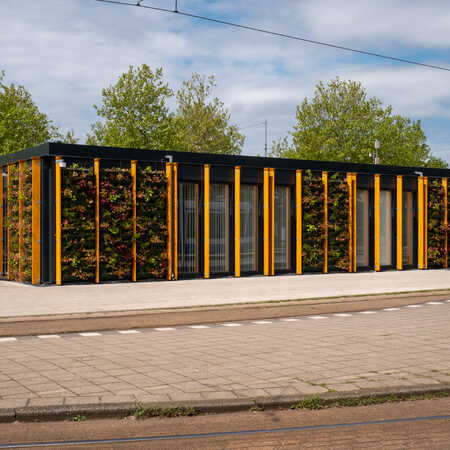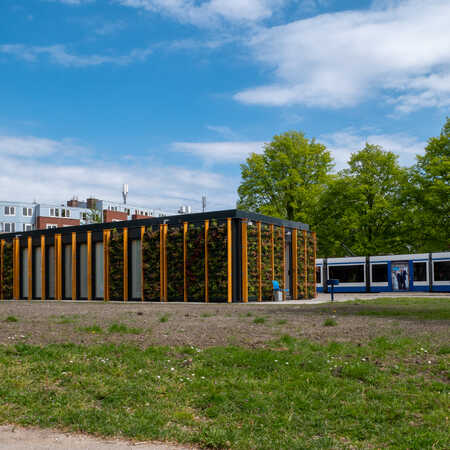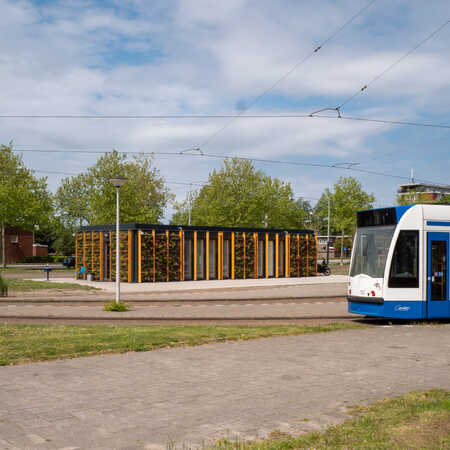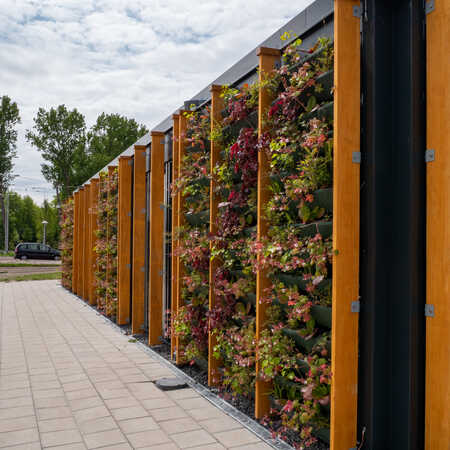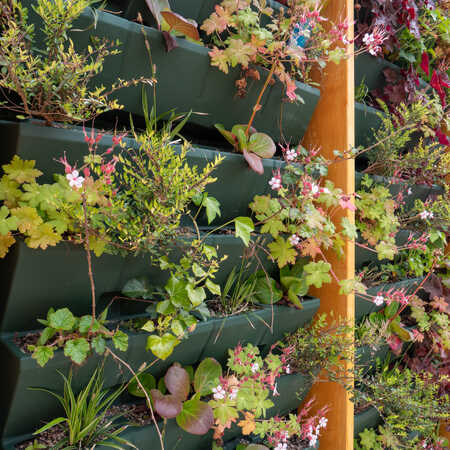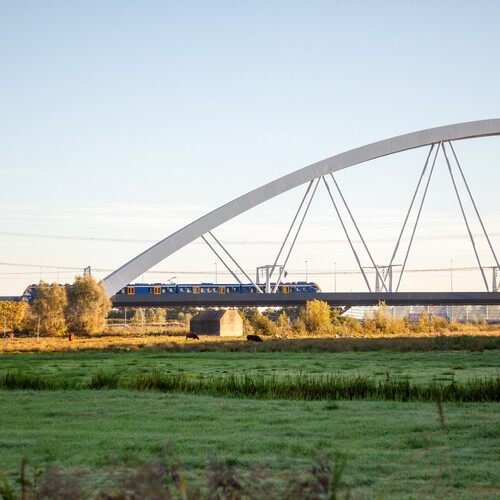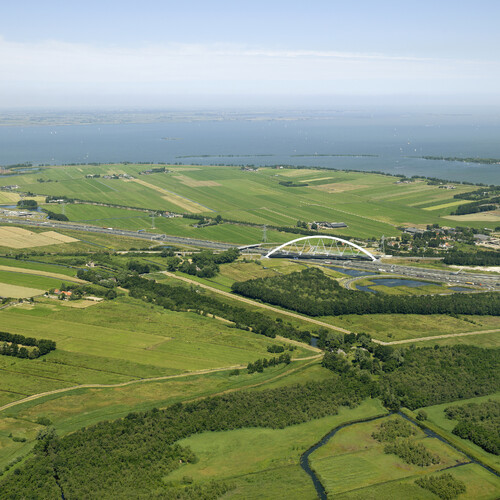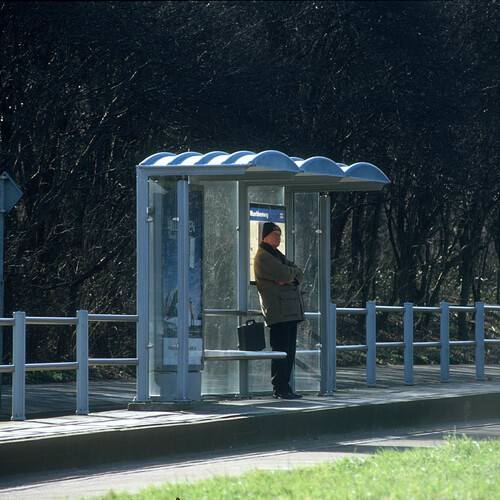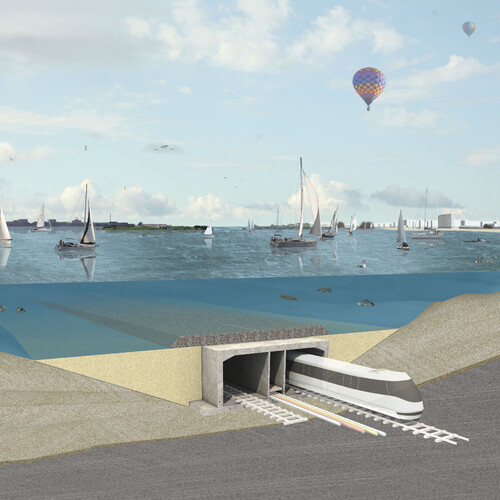The best camouflage
In the design that architects ZJA made for the Amsterdam Transport Authority the choice for an as green as possible building was made in the literal sense of the word. The roof is covered with green sedum, its structure consists of wooden beams and the outside walls are vertical gardens, irrigated by means of a clever system built into the roof, using stored rainwater. In an area characterized by green lawns and trees along the lake no better camouflage is possible. Even viewed from the upper floors of the buildings, and for people passing the square this six by sixteen meters long building becomes a natural element of the urban scene, right next to the loop that enables the trams to reverse direction.





